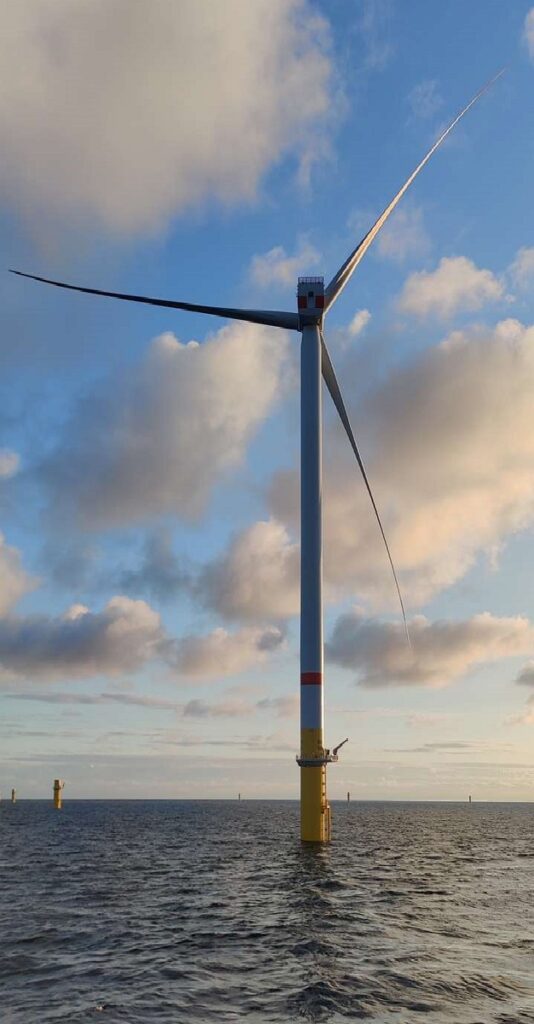Germany’s Borkum Riffgrund 3 offshore wind farm has seen the installation of its first Siemens Gamesa SG 11.0-200 DD wind turbine.
This wind farm, located approximately 72 kilometres off the coast of Lower Saxony, will feature a total of 83 Siemens Gamesa wind turbines, each with a rated capacity of 11 MW.
The project’s first wind turbine installation was undertaken by Seaway7’s newbuild Seaway Ventus. The process will be equally shared with Wind Osprey from Cadeler.
Ørsted and Nuveen Infrastructure jointly own Borkum Riffgrund 3. This milestone follows the successful delivery of the first power from the 253 MW Gode Wind 3 offshore wind farm, which the two companies are building simultaneously.
According to Peter Obling, Head of Continental Europe at Ørsted, Borkum Riffgrund 3 is a pioneering project in offshore wind energy and the first offshore wind farm in Germany to exceed 900 MW.
The Gode Wind 3 and Borkum Riffgrund 3 sites are in proximity to Ørsted’s operational offshore wind farms, Borkum Riffgrund 1 and 2, and Gode Wind 1 and 2. The addition of the two new wind farms will nearly double Ørsted’s installed offshore wind capacity in Germany to approximately 2.5 GW.
Ørsted was awarded the rights to build Borkum Riffgrund 3 with bids of EUR 0 per MWh during the German offshore wind auctions in 2017 and 2018, a first for offshore wind.
Upon commissioning of the offshore wind farm in 2025, offtake agreements totalling 786 MW have been established with Amazon (350 MW), BASF (186 MW), Covestro (100 MW), Energie-Handels-Gesellschaft/REWE Group (100 MW), and Google (50 MW).
Felix Gschnell, Programme Director for Borkum Riffgrund 3 and Gode Wind 3, stated that the installation of the first wind turbine represents a significant moment for the project. The team’s focus is now directed towards the safe and timely completion of the project for its operational handover in 2025.
Original Story at www.offshorewind.biz
